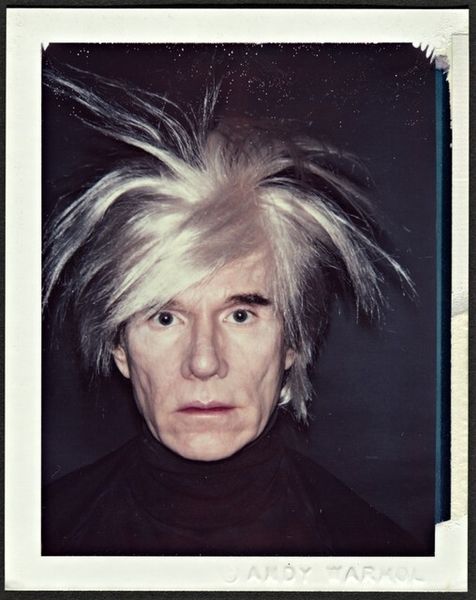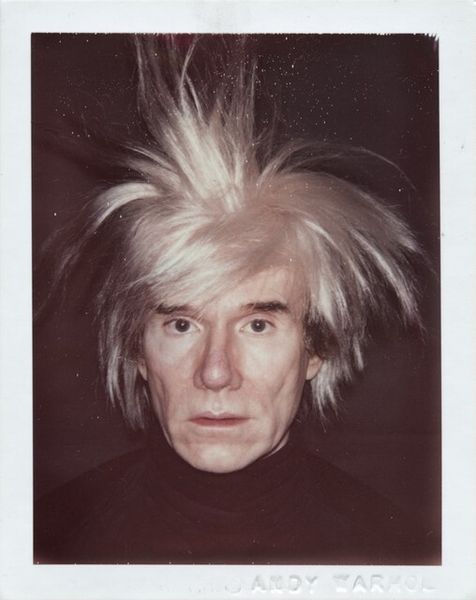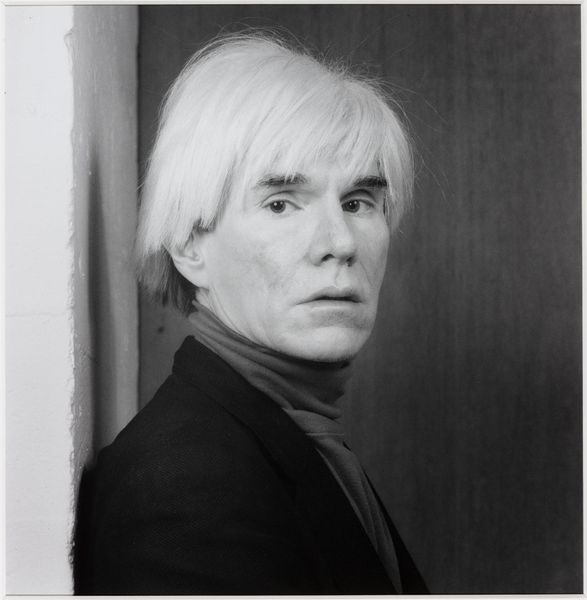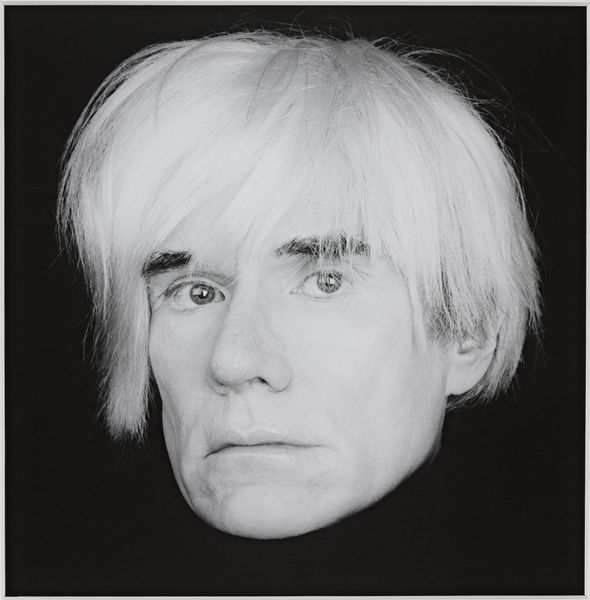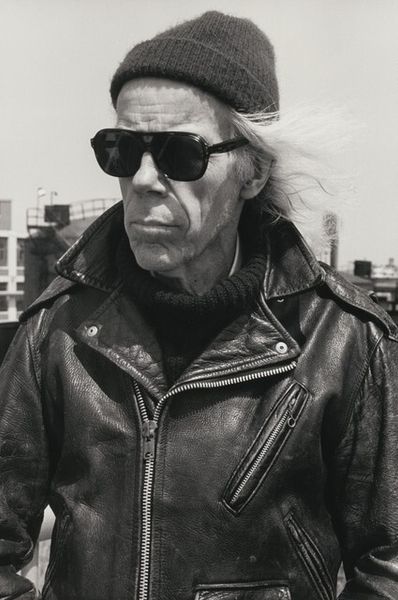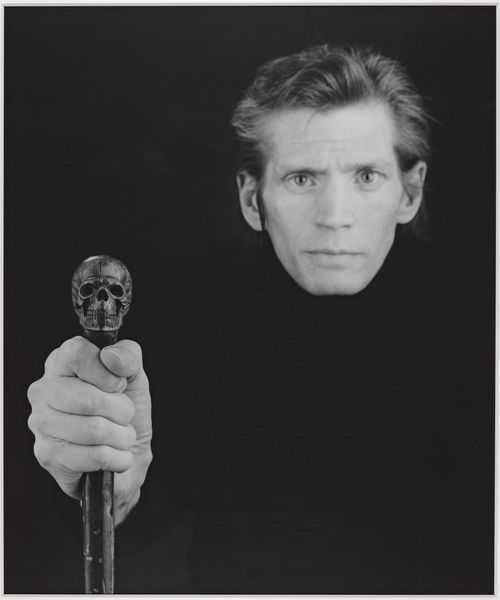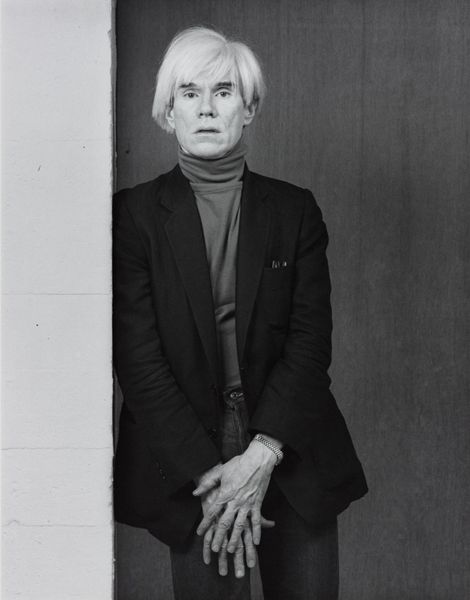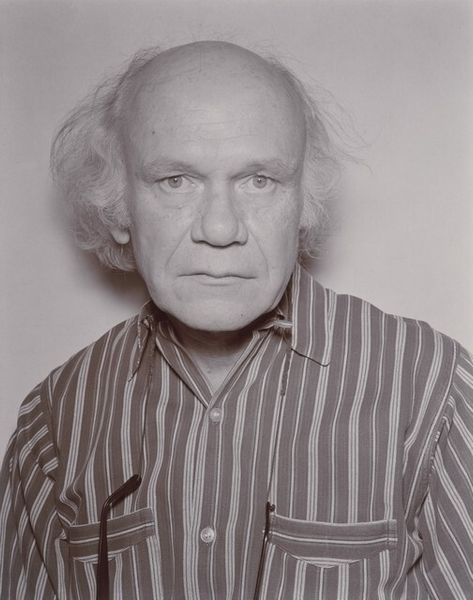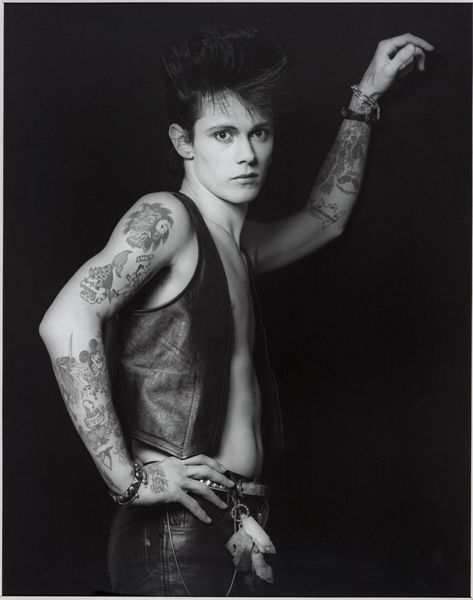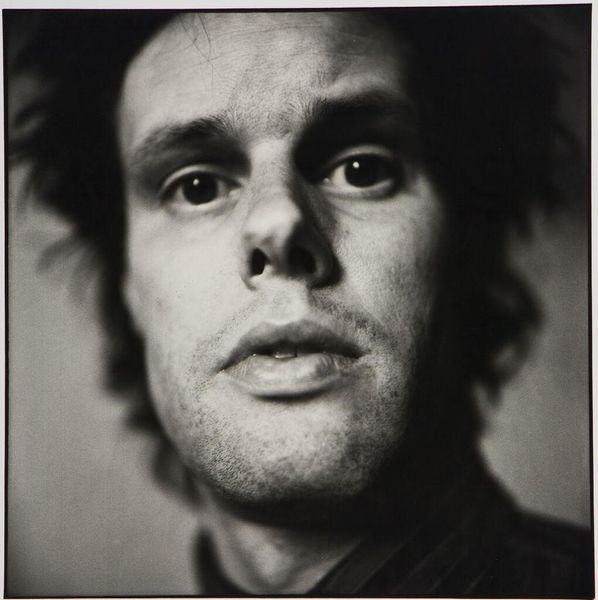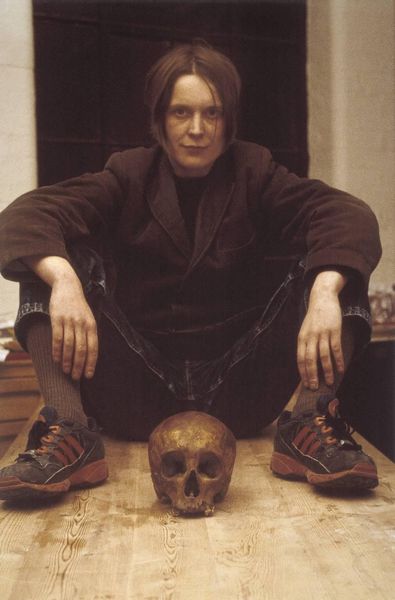
Dimensions: image: 9.4 x 7.2 cm (3 11/16 x 2 13/16 in.) sheet: 10.7 x 8.5 cm (4 3/16 x 3 3/8 in.)
Copyright: National Gallery of Art: CC0 1.0
Curator: Here we have Andy Warhol's "Self-Portrait with Fright Wig" from 1986. A late work in his oeuvre, it’s made using a Polaroid camera. Editor: Well, it’s definitely unsettling. The stark lighting and that hair, like a startled cat. There’s something deliberately confrontational about it. It makes me uncomfortable but also draws me in. Curator: Exactly. Think about Warhol's persona. He was meticulous in crafting his image, aware of the celebrity machine. This Polaroid disrupts that image, exposing a vulnerability, maybe even mortality. Consider also his history, his queer identity, and the stigmas of that era...it speaks to a cultural landscape filled with anxieties and prejudice. Editor: And the choice of Polaroid as a medium! It’s instant, mass-producible, but also fleeting, almost disposable. Think about the factory, how Warhol employed screen printing, turning artistic production into a mechanized process. He played with this tension between authenticity and replication. And even now, with digital images everywhere, there's something special about Polaroids and their specific texture that this portrait holds as it references death. Curator: The wig, of course, becomes central to this. What does it mean for an artist so involved in his image to present himself with such an obvious, almost cartoonish artifice? Editor: It could be about playing with drag, undermining the whole idea of a stable identity. Warhol understands how gender and identity are constructed, and he gleefully dismantles these categories with his use of disguise, of "low" materials like synthetic hair. The commodification of identity itself. Curator: It also prompts a reading related to aging and illness, knowing he died not long after this photograph was taken. Perhaps he's confronting his own decay, his own "product failure," through a raw and unguarded self-exposure. Editor: So, in a way, the fright wig is not just an element of self-styling, it's a symptom, of material decline. Warhol's art has always dealt with the production of images, commodities, and identities. Here, he's laying bare the mechanics of how he himself has been constructed. Curator: This image resonates, then, because it invites us to examine both the machinery behind celebrity image-making and the underlying anxieties we project onto figures like Warhol. Editor: Definitely a poignant conclusion, making this image feel so incredibly important to consider what lies beneath the shiny surface that Warhol often projected to the world.
Comments
No comments
Be the first to comment and join the conversation on the ultimate creative platform.
